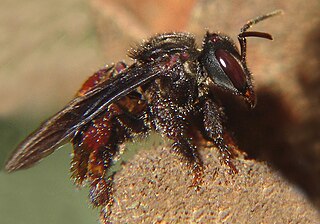
Trigona is one of the largest genera of stingless bees, comprising about 32 species, exclusively occurring in the New World, and formerly including many more subgenera than the present assemblage; many of these former subgenera have been elevated to generic status.

Abagrotis is a genus of moths of the family Noctuidae.

Abagrotis alternata, the greater red dart or mottled gray cutworm, is a moth of the family Noctuidae. The species was first described by Augustus Radcliffe Grote in 1865. It is found in eastern North America, from New Brunswick west across southern Canada to western Alberta, south to Arizona, New Mexico and the Gulf of Mexico.

Abagrotis brunneipennis, the Yankee dart, is a moth of the family Noctuidae. The species was first described by Augustus Radcliffe Grote in 1875. It is found in North America from Newfoundland west to Vancouver Island, south to west central Oregon, Utah, Colorado and North Carolina.
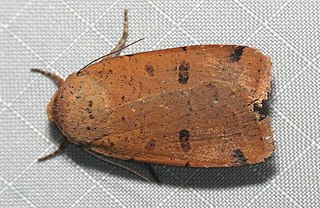
Abagrotis cupida, the Cupid dart or brown climbing cutworm, is a moth of the family Noctuidae. The species was first described by Augustus Radcliffe Grote in 1865. It is found in southern Canada and in the United States east of the Rocky Mountains.

Abagrotis discoidalis is a moth of the family Noctuidae first described by Augustus Radcliffe Grote in 1876. It is found North America in Washington, Oregon and California, west to northern Arizona and New Mexico, Colorado and north into southern Alberta.
Abagrotis dodi is a moth of the family Noctuidae first described by James Halliday McDunnough in 1927. It is found in North America southwest of Calgary, southern Yukon south to southern Utah and Colorado and west to central Nevada and Washington.

Abagrotis duanca is a moth of the family Noctuidae first described by Smith in 1908. It is found in the Pacific Northwest of North America. In Alberta it has been collected only in the extreme southeastern corner.
Abagrotis erratica is a moth of the family Noctuidae first described by Smith in 1890. It is found in North America from southern British Columbia including Vancouver Island south to central Utah and central California. It is also found in extreme southern Alberta.
Abagrotis hermina is a moth of the family Noctuidae first described by J. Donald Lafontaine in 1998. It is found in Canada and the United States, including Utah and California.

Abagrotis mirabilis is a moth of the family Noctuidae first described by Augustus Radcliffe Grote in 1879. It is found in western North America, from British Columbia south to California.
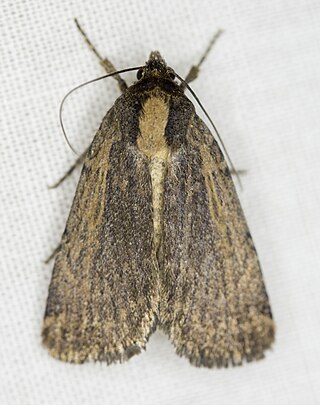
Abagrotis nanalis is a moth of the family Noctuidae first described by Augustus Radcliffe Grote in 1881. It is found in North America from southern British Columbia east to southwest Saskatchewan and western North Dakota, south to northern New Mexico and California.
Abagrotis nefascia is a moth of the family Noctuidae first described by Smith in 1908. It is found in North America from Alberta and British Columbia down through Massachusetts to California. The species is listed as threatened in the US state of Connecticut.

Abagrotis orbis, the well-marked cutworm or Barnes' climbing cutworm, is a moth of the family Noctuidae. The species was first described by Augustus Radcliffe Grote in 1876. It is in southwestern North America, extending eastward across the plains and with a large disjunct population in dune habitats in the southern Great Lakes area. It extends into western Canada only in the southern interior of British Columbia and southern Alberta and Saskatchewan.

Abagrotis reedi is a moth of the family Noctuidae first described by John S. Buckett in 1969. It is found in North America, from California, east to Arizona, Colorado and Iowa into Canada where it is found in Manitoba, Saskatchewan, Alberta and British Columbia.

Abagrotis scopeops is a moth of the family Noctuidae first described by Harrison Gray Dyar Jr. in 1904. It is found in North America from southern British Columbia, south through western Montana, Idaho, Utah and Nevada down to southern California.
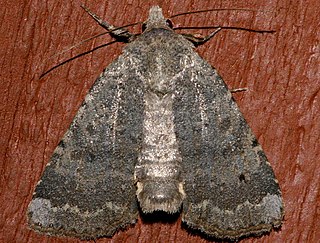
Abagrotis variata is a moth of the family Noctuidae first described by Augustus Radcliffe Grote in 1876. It is found in North America from British Columbia to California, east to New Mexico and Alberta.
Abagrotis vittifrons is a moth of the family Noctuidae first described by Augustus Radcliffe Grote in 1864. It is found in North America from eastern North Dakota and south-western Saskatchewan west to the southern interior of British Columbia, south to southern California, Arizona and New Mexico.
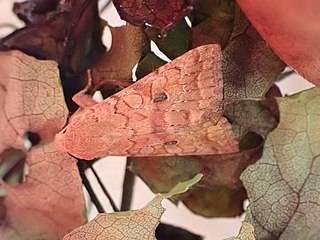
Agrochola verberata is a moth in the family Noctuidae first described by Smith in 1904. It is found in western North America, from south-central Saskatchewan west to Alaska and coastal British Columbia, south to at least south-western Montana and south-western Colorado.
Centrorumis is a monospecific genus of velvet worm containing the single species Centrorumis trigona. This species has 15 pairs of legs in both sexes. It is found in New South Wales, Australia.














